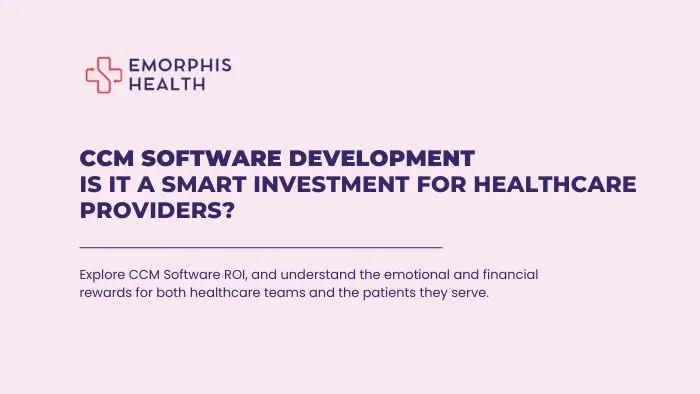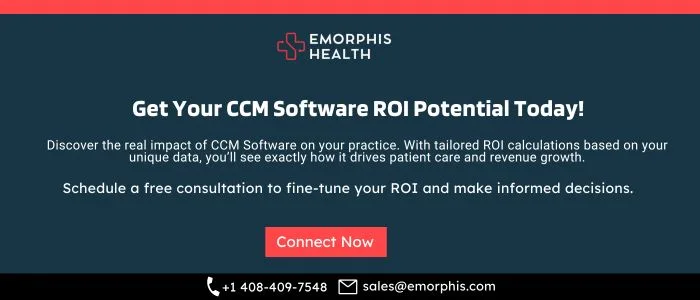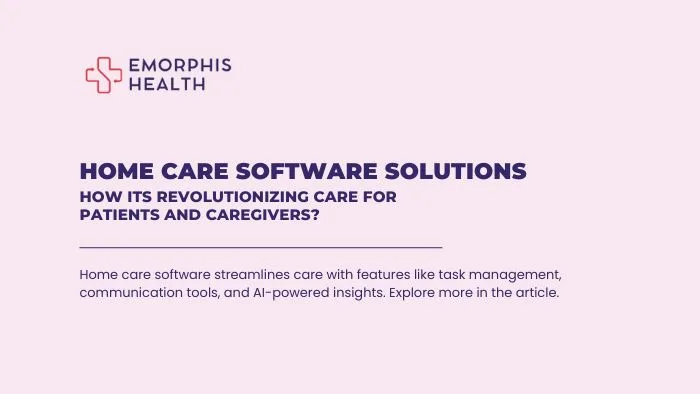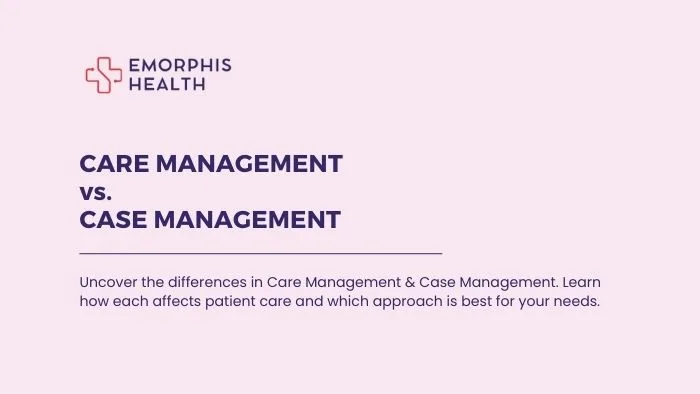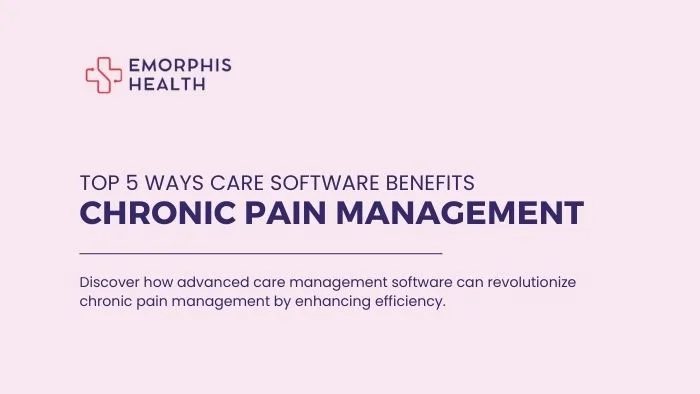Overview
See Contents
- 1 Overview
- 2 What is CCM Software?
- 3 Key Features of CCM Software
- 4 The Emotional Impact on Patients
- 5 The ROI of CCM Software for Healthcare Providers
- 6 ROI Calculation of a Subscription based model CCM software
- 7 ROI Calculation for Custom-Developed CCM Software
- 8 Conclusion: Investing in CCM Software is Investing in People
In today’s healthcare ecosystem, chronic diseases are not just a challenge—they are a growing burden. For healthcare providers, managing chronic conditions means more than simply treating patients; it’s about providing continuous care that keeps individuals healthier, hospital readmissions, and ensuring the sustainability of their practices. Chronic diseases are costly. According to the CDC, 90% of the $4.1 trillion in annual healthcare expenditures in the U.S. is spent on chronic and mental health conditions. The sheer scale of these costs underscores the importance of streamlined chronic care management systems. This is where CCM software (Chronic Care Management software) becomes an invaluable asset. But what makes CCM software so powerful, and how can it benefit healthcare providers and patients?
Let’s take a deeper dive into its capabilities, explore its ROI, and understand the emotional and financial rewards for both healthcare teams and the patients they serve.
What is CCM Software?
CCM software is designed specifically to help healthcare providers manage chronic diseases more effectively through continuous care coordination, monitoring, and real-time patient interaction. It’s an all-encompassing platform that integrates a variety of services, from medication reminders and appointment scheduling to telehealth capabilities and data analytics.
At its core, CCM software allows providers to track and monitor patients’ health remotely, offering non-invasive interventions and helping to manage conditions like diabetes, heart disease, and hypertension. It’s not just a tool; it’s an ecosystem that provides both clinical and administrative efficiencies that ultimately contribute to improved patient outcomes and streamlined workflows for healthcare teams.
Key Features of CCM Software
Let’s break down some of the key features that make CCM software a necessity in modern healthcare:
- Patient Monitoring and Data Analytics: CCM software tracks patient health metrics remotely, including blood pressure, glucose levels, and heart rate. This allows providers to act quickly when a patient’s condition fluctuates, preventing crises before they escalate.
- Integration with EHR (Electronic Health Records): CCM software seamlessly integrates with existing EHR systems like Epic, Cerner, and Allscripts, ensuring a 360-degree view of patient data. This integration also supports a more efficient billing process, ensuring providers are compensated for their time spent on non-face-to-face care.
- Telehealth Functionality: As telemedicine continues to rise, CCM software supports remote consultations and video visits. This functionality improves accessibility for patients, especially those living in rural or underserved areas, and reduces the need for in-person visits.
- Medication Management and Reminders: Chronic disease patients often struggle to adhere to their medication regimens. CCM software provides timely reminders, helping patients stay on track with their treatment plans.
- Automated Appointment Scheduling and Follow-ups: CCM software reduces the administrative burden on healthcare staff by automating appointment scheduling and follow-up reminders. This saves time and enhances operational efficiency.
- Compliance and Documentation: Given the strict regulatory landscape of healthcare, CCM software ensures compliance with CMS (Centers for Medicare & Medicaid Services) billing codes and quality reporting standards, guaranteeing that providers meet all necessary criteria for reimbursement.
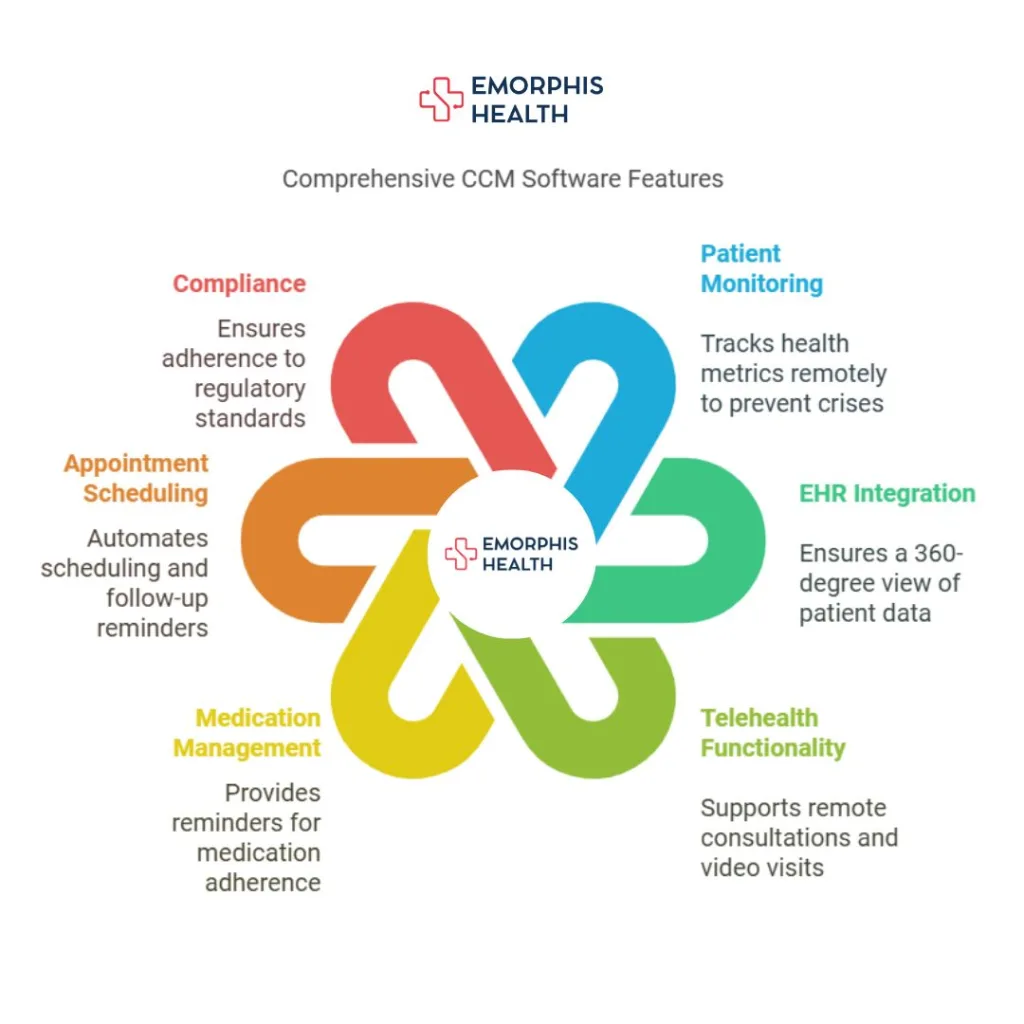

The Emotional Impact on Patients
For patients suffering from chronic conditions, the emotional toll can be immense. Managing a long-term disease can feel overwhelming, leaving patients with feelings of isolation and helplessness. However, CCM software doesn’t just treat the disease—it also helps treat the patient’s experience. Here’s how:
- Reduced Anxiety: With constant monitoring and reminders, patients are assured that their healthcare team is actively involved in their care. This proactive support helps alleviate stress about managing their condition.
- Increased Engagement: CCM software promotes patient empowerment. With easy access to health data, medication schedules, and the ability to communicate with their healthcare provider directly, patients feel more in control of their health.
- Improved Health Outcomes: The emotional benefits of better disease management are profound. When patients feel supported and see positive health outcomes, they experience an emotional uplift that contributes to overall well-being.
- Timely Support: CCM software enables quick interventions in case of health deterioration. Knowing that their healthcare provider is only a message or video call away provides patients with peace of mind.
Further, find the details of Chronic Care Management Software Development.
The ROI of CCM Software for Healthcare Providers
Now let’s get to the heart of the matter—ROI. The benefits of CCM software are tangible, and they can be calculated. Providers see a return on investment in various ways:
1. Reduced Readmission Rates
One of the primary cost-saving benefits of CCM software is its ability to reduce hospital readmissions. According to studies, hospitals can save between $5,000 to $10,000 per avoided readmission, which is made possible through proactive care management and early intervention. When readmissions are reduced by even 10%, the savings quickly add up.
2. Increased Reimbursement Opportunities
Under Medicare’s CCM program, healthcare providers can bill for non-face-to-face care. This reimbursement rate typically ranges between $42 to $85 per patient per month, depending on the complexity of care. If a practice enrolls 100 patients in the CCM program, they could earn between $50,000 and $85,000 annually in reimbursements.
3. Operational Efficiency and Time Savings
With CCM software, routine administrative tasks like appointment scheduling, follow-up calls, and medication reminders are automated, allowing healthcare staff to focus on higher-value activities. This improves staff productivity, leading to cost savings and less time spent on manual processes.
4. Better Patient Engagement and Satisfaction
Happy patients are loyal patients. By providing ongoing care and support, CCM software helps to improve patient satisfaction and engagement. When patients feel supported, they are more likely to stay with the same healthcare provider, which reduces patient churn.
5. Improved Population Health Management
CCM software allows providers to manage a population of chronic disease patients more effectively, identifying high-risk individuals and taking preventive measures. This proactive approach can lead to significant cost savings by avoiding expensive emergency room visits and hospital stays.
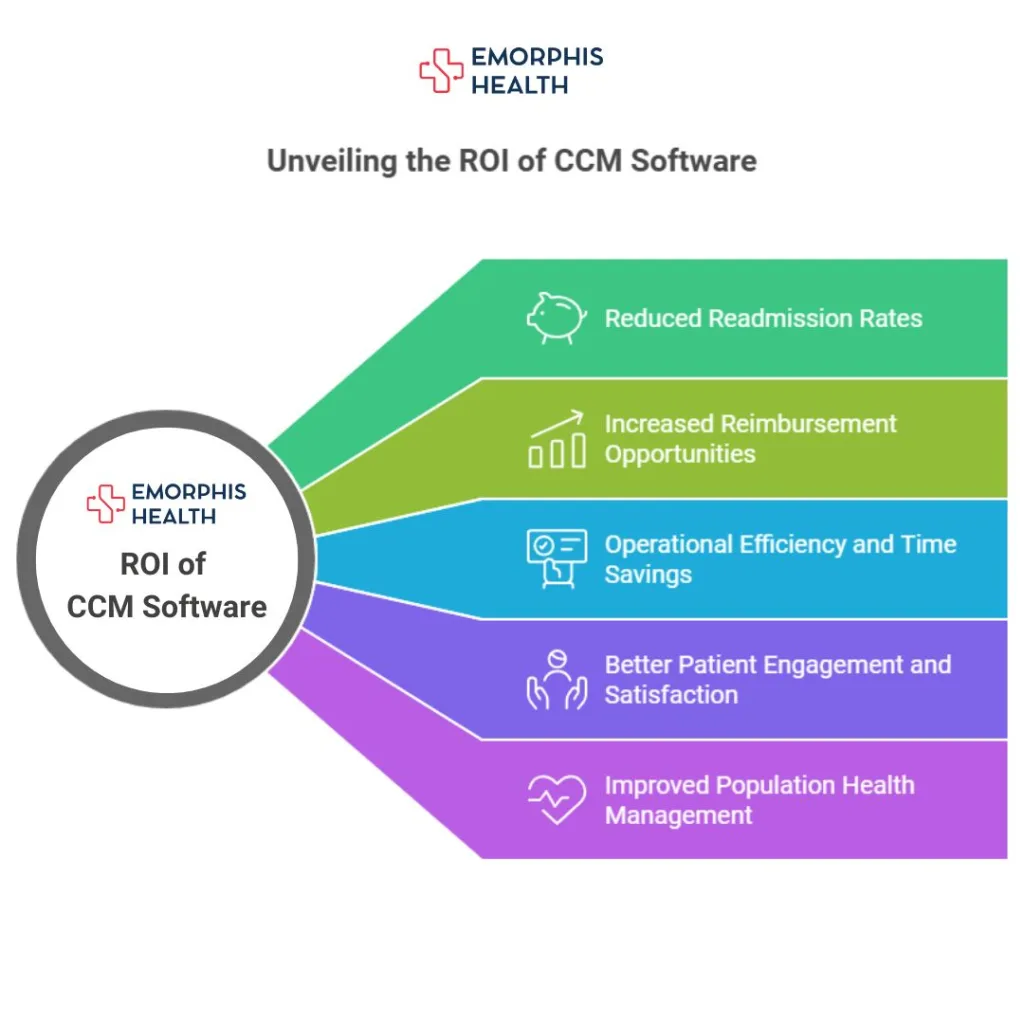

ROI Calculation of a Subscription based model CCM software
Let’s break down a simple ROI calculation for a practice using CCM software:
- Number of CCM Patients: 100 patients
- Reimbursement per Patient per Month: $50
- Monthly Income from CCM: 100 x $50 = $5,000
- Annual Income from CCM: $5,000 x 12 = $60,000
Now, consider the cost of implementing CCM software, which might include initial setup costs and ongoing subscription fees. For example:
- Software Subscription: $1,000 per month
- Annual Software Cost: $12,000
ROI Calculation:
- Annual Income from CCM: $60,000
- Annual Software Cost: $12,000
- Net ROI: $60,000 – $12,000 = $48,000
This results in a net ROI of $48,000 annually—an impressive return, especially when you factor in the non-financial benefits such as improved patient outcomes, engagement, and satisfaction.
The subscription model for CCM software often falls short of delivering the same ROI as custom-developed solutions due to its inherent limitations. While it offers a lower upfront cost, subscription software may lack the tailored features and seamless integration needed to meet the unique workflows of a healthcare provider. Hence increasing the labor cost of your staff engaged in other software solutions to collect data. The subscription model often overlooks labor cost savings, as its standardized features may not fully optimize staff workflows, leaving efficiency gains untapped. Also, without the flexibility to scale or adapt to specific needs, providers may face inefficiencies, reduced reimbursements, and missed opportunities for optimizing care—ultimately hindering long-term ROI.
ROI Calculation for Custom-Developed CCM Software
While subscription-based CCM software offers a straightforward ROI calculation, custom-developed CCM software presents a more tailored approach to ROI. Custom solutions typically have a higher upfront cost, but they can deliver more long-term benefits through enhanced functionality, integration with existing systems, and scalability. Let’s walk through an example to calculate the ROI for custom-developed CCM software and understand the financial and operational benefits for healthcare providers.
Understanding Custom-Developed CCM Software
Custom-developed CCM software is designed specifically for a healthcare provider’s unique needs, offering greater flexibility, personalization, and control. Unlike off-the-shelf solutions, custom CCM software can be tailored to:
- Integrate seamlessly with existing Electronic Health Record (EHR) systems.
- Include specialized features required by the practice, such as advanced telehealth capabilities, analytics, or custom workflows.
- Scale as the organization grows, allowing for added features or more patients without significant cost increases.
Although the initial investment is higher, custom-developed software can offer better cost efficiency over time by reducing reliance on third-party vendors, lowering ongoing subscription fees, and improving operational efficiency.
Components to Consider in the Custom CCM Software ROI Calculation
The ROI for custom-developed CCM software depends on several factors, including:
- Initial Development Costs: This includes the costs of designing, developing, and deploying the software. For healthcare providers, these costs can range from $50,000 to $500,000 depending on the complexity of the software and the vendor.
- Ongoing Maintenance & Updates: Custom software requires regular maintenance, updates, and technical support. This is typically an annual cost that ranges from 10-20% of the initial development cost.
- Operational Efficiency Gains: Custom CCM software can be tailored to automate specific administrative tasks and integrate seamlessly with existing systems, leading to significant time and cost savings for staff.
- Increased Revenue from Billing: With the ability to fully integrate with Medicare’s CCM reimbursement program, a custom solution can streamline billing processes and ensure maximum reimbursement.
- Long-Term Scalability: A custom solution provides flexibility to scale with your practice, which reduces costs related to adding new users or expanding the system.
Example of ROI Calculation for Custom-Developed CCM Software
Let’s assume a healthcare provider invests in custom-developed CCM software. Here’s how we can calculate the ROI:
1. Initial Development Costs:
- Custom CCM Software Development: $150,000 (one-time cost)
2. Ongoing Maintenance Costs:
- Annual Maintenance and Updates: $15,000 per year
3. Revenue from Medicare CCM Billing:
Let’s assume the provider enrolls 100 patients in the CCM program and receives $50 per patient per month in reimbursement (based on Medicare’s reimbursement rates).
- Monthly Revenue from CCM Billing: 100 patients x $50 = $5,000
- Annual Revenue from CCM Billing: $5,000 x 12 = $60,000
4. Operational Savings (Time & Cost Reduction):
By automating scheduling, medication reminders, follow-ups, and integrating with existing systems, the custom software saves 20 hours per week for the staff. Let’s calculate the labor savings:
- Staff Hourly Cost (for CCM-related tasks): $30 per hour Lab
- or Savings per Week: 20 hours x $30 = $600
- Labor Savings per Year: $600 x 52 weeks = $31,200
5. Long-Term Scalability:
Assume that in the next 3 years, the practice expects to increase its patient base by 20% annually, requiring minimal additional cost for software scaling. For each new patient, the practice can earn an additional $600 per year in Medicare CCM reimbursement, leading to an annual increase of $12,000 in revenue (assuming an additional 20 patients each year).
ROI Calculation for the First Year
- Initial Software Development Cost: $150,000
- Ongoing Maintenance Cost: $15,000
- Revenue from CCM Billing: $60,000
- Labor Savings: $31,200
Total Annual Benefit:
$60,000 (Revenue) + $31,200 (Labor Savings) = $91,200
Total Cost in the First Year:
$150,000 (Development) + $15,000 (Maintenance) = $165,000
Net ROI in Year 1:
$91,200 (Benefit) – $165,000 (Cost) = –$73,800 (Negative ROI)
While the negative ROI in the first year might seem daunting, it’s important to note that custom-developed software has long-term financial advantages.
ROI Calculation for Years 2 and 3 (After Initial Year)
Year 2 (Assuming 20% patient increase):
- Revenue from CCM Billing: $60,000 + $12,000 = $72,000
- Labor Savings: $31,200 (no change)
- Total Benefit: $72,000 (Revenue) + $31,200 (Labor Savings) = $103,200
- Maintenance Costs: $15,000
Net ROI in Year 2:
$103,200 (Benefit) – $15,000 (Cost) = $88,200
Year 3 (Assuming another 20% patient increase):
- Revenue from CCM Billing: $72,000 + $12,000 = $84,000
- Labor Savings: $31,200 (no change)
- Total Benefit: $84,000 (Revenue) + $31,200 (Labor Savings) = $115,200
- Maintenance Costs: $15,000
Net ROI in Year 3:
$115,200 (Benefit) – $15,000 (Cost) = $100,200
Cumulative ROI over Three Years
Total Benefit over 3 Years:
$91,200 (Year 1) + $103,200 (Year 2) + $115,200 (Year 3) = $309,600
Total Costs over 3 Years:
$165,000 (Development) + $15,000 x 3 (Maintenance) = $210,000
Cumulative Net ROI over 3 Years:
$309,600 (Benefit) – $210,000 (Cost) = $99,600
The Long-Term Value of Custom-Developed CCM Software
The ROI for custom-developed CCM software may not be immediately evident in the first year due to the high initial development cost, but as shown, the long-term benefits far outweigh the investment. Over time, the practice sees significant revenue increases from reimbursements, labor cost savings, and the ability to scale easily without incurring substantial new costs. By the third year, the net ROI is a positive $100,000, demonstrating the true value of custom-developed CCM software.
Overall, while the upfront investment for custom CCM software can be substantial, the returns—in terms of both financial ROI and improved patient care—make it an excellent choice for healthcare providers looking to manage chronic conditions effectively and build sustainable, long-term value.
Conclusion: Investing in CCM Software is Investing in People
The ROI of CCM software goes beyond mere numbers. It’s about making a difference in the lives of your patients, providing them with the care and support they need, and improving their emotional well-being. For healthcare providers, CCM software is an essential tool that not only boosts revenue but also helps foster stronger relationships with patients. In an increasingly patient-centric world, investing in CCM software is not just a smart financial decision—it’s a commitment to providing better, more compassionate care.
Ready to explore how CCM software can transform your practice? Reach out to us and discover how we can help you deliver better care, improve patient outcomes, and boost your ROI.

